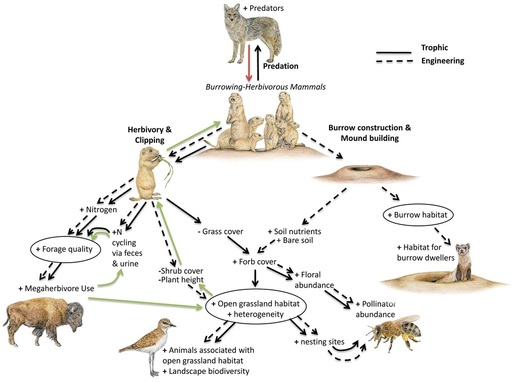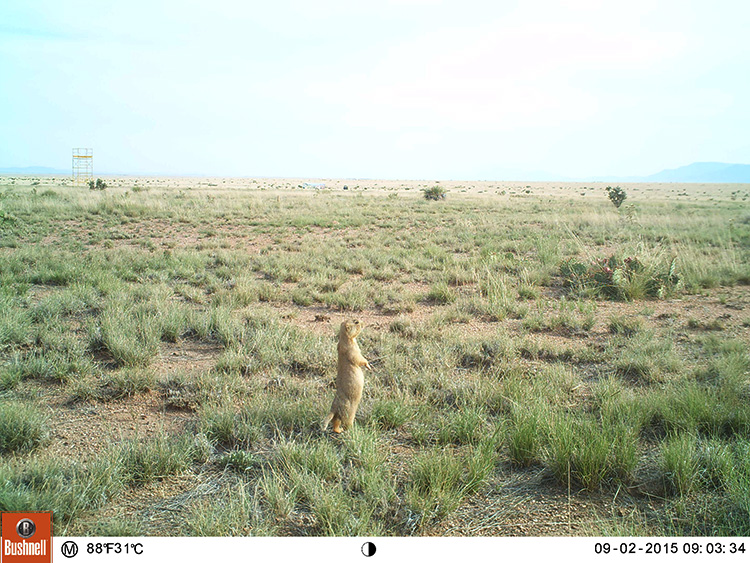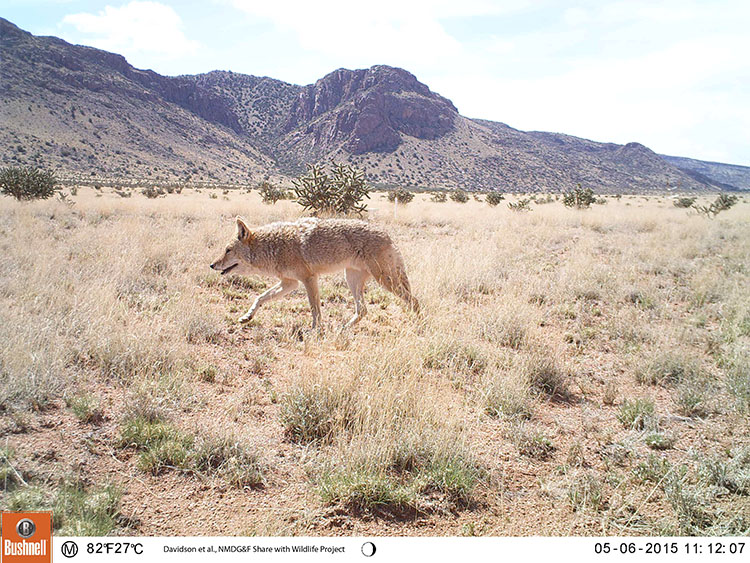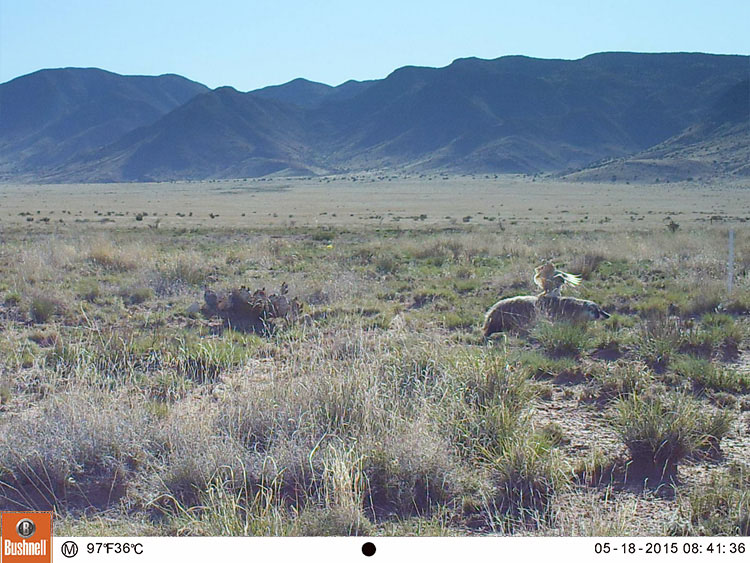Following is a selected project highlight from the Share with Wildlife mission to assist all New Mexico wildlife in need, no matter what species.
Project Highlights

Summary of services provided by prairie dogs. Drawings by Sharyn Davidson. Image from Davidson et al. 2012.
What are some of the things that we already know about prairie dogs? They provide food for many predators, including coyotes (Canis latrans), American badgers (Taxidea taxus), various raptors including the ferruginous hawk (Buteo regalis), and the highly endangered black-footed ferret (Mustela nigripes). They also provide burrows that are used by numerous other species, including burrowing owls (Athene cunicularia). Through their foraging activities, they increase the abundance of flowers and in turn increase abundance of pollinators, like bees and butterflies. They also decrease shrub cover and help maintain open, healthy grassland habitats that support many grassland species, including the mountain plover (Charadrius montanus), pronghorn (Antilocapra americana), and swift fox (Vulpes velox). Their herbivory and digging activities also enhance nutrients that improve the quality of forage for species such as the bison (Bison bison). Take home message: Prairie dogs help to maintain unique islands of important grassland habitat and associated biodiversity. Because of their ecological importance, there is much interest in restoring and protecting their populations.
Click above to view larger image, description, and source..
So what does Ana’s 2015 Share with Wildlife project add to our knowledge about prairie dogs? For one thing, she has obtained a staggering number of photographs from her camera traps (roughly half a million!) and these photos have captured many species associated with prairie dog colonies. These include burrowing owls, black-tailed jackrabbits (Lepus californicus), desert cottontails (Sylvilagus audubonii), and coyotes. She has found that there are many more photos of these animals on the reintroduced prairie dog colonies compared to off-colony grassland areas that lack prairie dogs. She is also finding that the photographs can provide information regarding species behavior. For example, one camera trap photo shows a burrowing owl pouncing on a badger in an attempt to chase the badger off the prairie dog colony. Burrowing owls can engage in this behavior while prairie dogs are simultaneously sounding alarm calls in response to a predator entering a colony. This is an excellent example of multiple species working together to fend off a shared predator!
Overall, her preliminary results suggest that the reintroductions of prairie dogs at the Sevilleta NWR appear to be helping to restore their functional role in the Refuge’s grassland ecosystem, and that the camera traps are able to capture many photos of prairie dogs.



